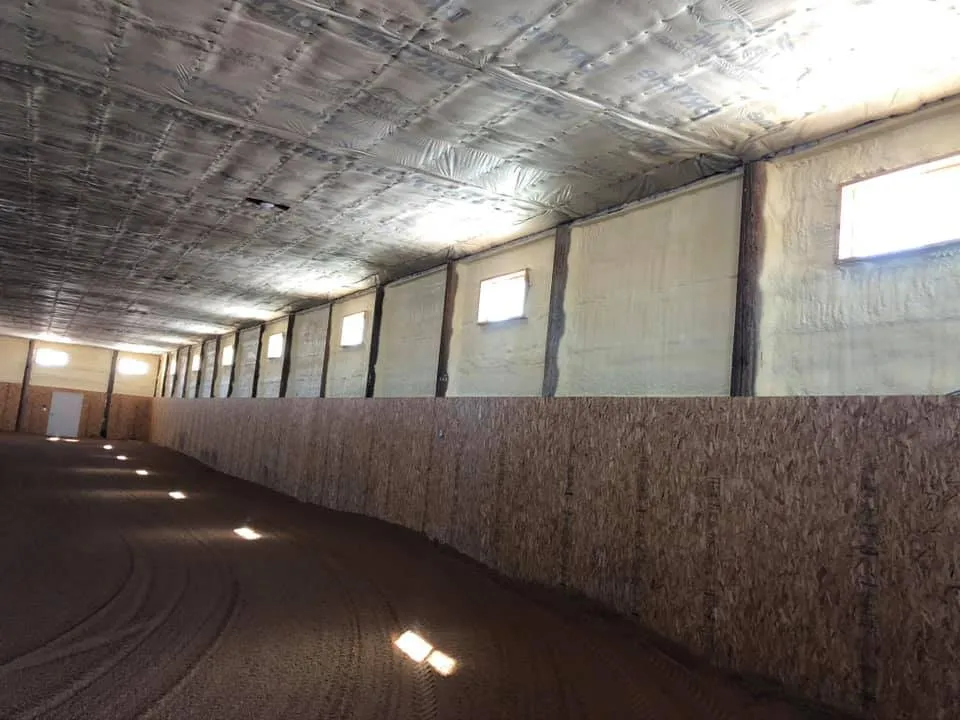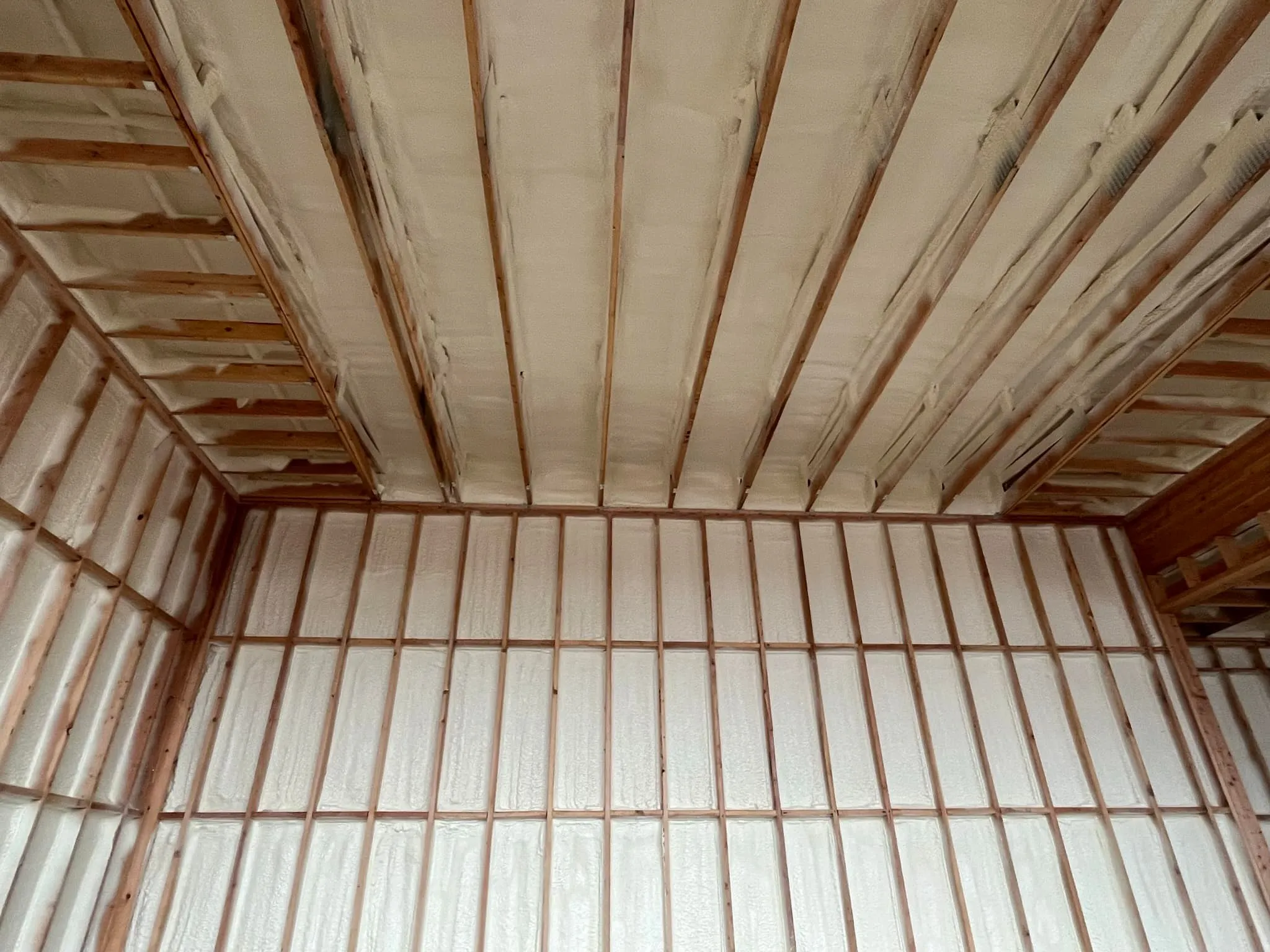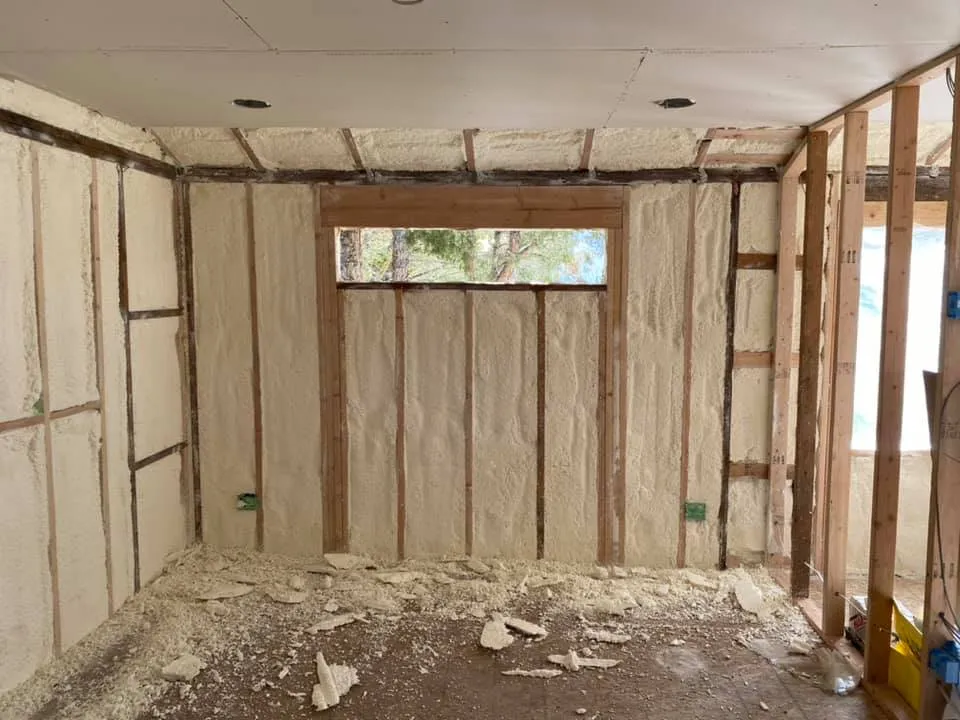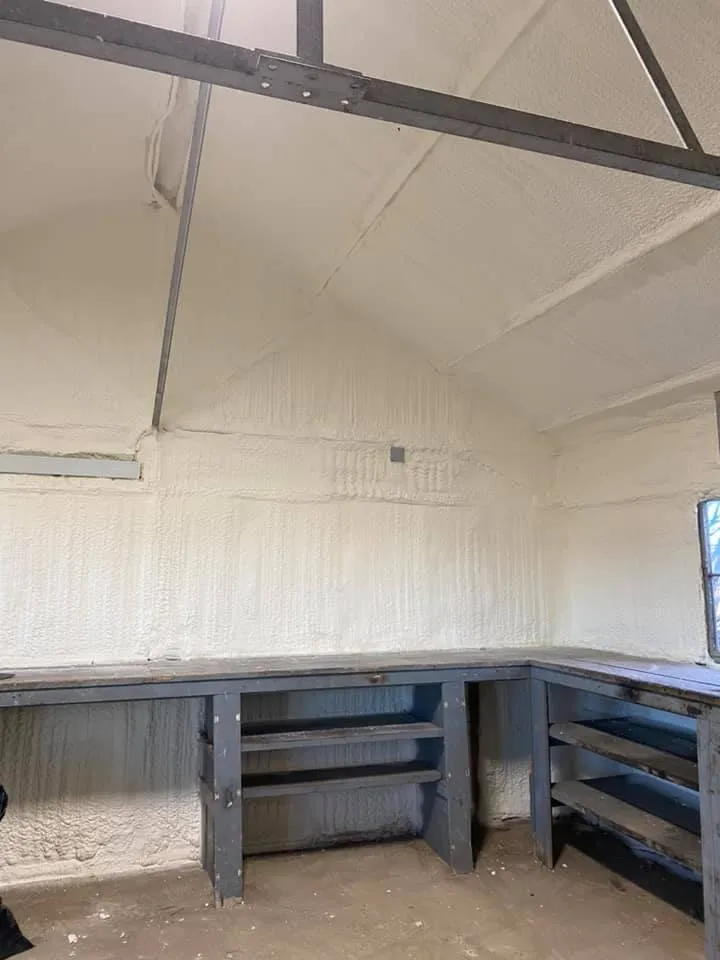

Spray foam insulation performs exceptionally well in Victor, Idaho’s harsh winter conditions, with closed-cell foam being the superior choice for this climate. Victor experiences winter temperatures that regularly drop below -10°F, with snowfall exceeding 100 inches annually. Closed-cell spray foam provides the highest R-value per inch (R-6 to R-7) and creates an impermeable air barrier that prevents heat loss and moisture infiltration—critical factors for surviving Idaho’s brutal winters.
The combination of extreme cold, heavy snow loads, and significant temperature fluctuations makes Victor one of the most demanding environments for insulation systems. Spray foam’s ability to seal every crack and crevice while providing superior thermal resistance makes it the most effective solution for maintaining comfortable indoor temperatures and preventing ice dam formation. This analysis draws from extensive field experience with insulation installations across Teton County’s challenging climate conditions.
Victor sits at 6,200 feet elevation in Teton Valley, creating unique insulation demands that standard materials often fail to address. The area experiences temperature swings of 40-50 degrees within 24 hours, placing extreme stress on building envelopes.
Winter heating degree days in Victor exceed 8,500 annually, compared to the national average of 4,000. This means buildings require nearly double the heating energy of moderate climates. Snow loads regularly reach 50-70 pounds per square foot on roofs, while persistent winds increase heat loss through air infiltration.
Bonus Tip: Install spray foam before the first significant snowfall. Once temperatures drop below 40°F consistently, curing times increase dramatically and application becomes more challenging.
Closed-cell spray foam maintains its insulating properties down to -40°F, far exceeding Victor’s typical winter lows. The material’s cellular structure doesn’t compress under snow loads, preserving thermal performance throughout the winter season.
Open-cell foam, while less expensive, absorbs moisture and loses effectiveness in extreme cold. Fiberglass batts compress under temperature stress and allow significant air movement, reducing their effective R-value by 30-40% in Victor’s conditions.
| Insulation Type | R-Value Per Inch | Air Sealing | Moisture Resistance | Performance at -20°F |
|---|---|---|---|---|
| Closed-Cell Spray Foam | R-6.0 to R-7.0 | Excellent | Impermeable | 100% retention |
| Open-Cell Spray Foam | R-3.5 to R-4.0 | Good | Permeable | 85% retention |
| Fiberglass Batts | R-3.1 to R-3.4 | Poor | Absorbs moisture | 60% retention |
| Cellulose | R-3.6 to R-3.8 | Fair | Absorbs moisture | 70% retention |
Proper spray foam installation in Victor requires specific thickness applications to handle the extreme conditions. Building codes mandate minimum R-values, but Victor’s climate demands higher performance standards.
| Application Area | Minimum Thickness | Recommended R-Value | Closed-Cell Thickness | Open-Cell Thickness |
|---|---|---|---|---|
| Exterior Walls | 2 inches | R-20 | 3 inches | 5.5 inches |
| Basement Walls | 2 inches | R-15 | 2.5 inches | 4 inches |
| Rim Joists | 3 inches | R-20 | 3 inches | 5.5 inches |
| Attic/Roof Deck | 4 inches | R-38 | 6 inches | 10 inches |
According to the Department of Energy’s 2024 Climate Zone Analysis, Zone 7 climates like Victor require 40% higher insulation values than moderate climates to achieve equivalent energy performance.
Timing becomes critical for spray foam installation in Victor’s climate. Applications must occur when ambient temperatures exceed 40°F for proper curing. Late fall installations often face delays due to early snowfall and temperature drops.
Ventilation requirements change with spray foam systems. Traditional vented attics become unvented conditioned spaces, requiring HVAC modifications. This affects existing mechanical systems and may require upgrades to handle the improved building envelope performance.
Moisture management requires careful attention. While closed-cell foam prevents moisture infiltration, improper installation can trap existing moisture, leading to rot or mold issues. Professional installation includes moisture testing and proper vapor barrier integration.
Bonus Tip: Schedule installation during Victor’s brief construction season (May through September) to ensure optimal conditions and avoid weather delays.
High Country Solutions provides comprehensive insulation solutions specifically designed for Victor’s extreme climate conditions:
Spray foam insulation requires minimal maintenance once properly installed. The material doesn’t settle, compress, or degrade over time like traditional insulation. Annual inspections should focus on mechanical penetrations and areas where trades may have disturbed the foam during maintenance work. Performance monitoring shows that properly installed spray foam maintains its R-value for the building’s lifetime. Unlike fiberglass or cellulose, spray foam doesn’t lose effectiveness due to settling, moisture absorption, or pest damage common issues in Victor’s challenging environment.

High-quality closed-cell foam maintains flexibility down to -40°F without cracking. The material’s cellular structure accommodates thermal expansion and contraction better than rigid insulation boards.
Properly applied spray foam actually strengthens roof structures by distributing loads evenly. The foam bonds to sheathing and framing, creating a composite structure that handles Victor’s heavy snow loads effectively.
Spray foam eliminates the warm spots that cause ice dam formation by sealing air leaks and providing consistent insulation coverage. This maintains even roof temperatures that prevent melting and refreezing cycles.
Victor’s extreme winter conditions demand insulation solutions that perform consistently under stress. Spray foam’s superior thermal resistance, air sealing properties, and structural benefits make it the optimal choice for this challenging environment.
The investment in spray foam insulation pays dividends through reduced energy costs, improved comfort, and prevention of ice-related damage. Buildings insulated with spray foam maintain stable indoor temperatures even during Victor’s harshest weather events, while traditional insulation systems often fail to provide adequate protection.
Consider your building’s specific exposure, existing condition, and long-term performance requirements when selecting insulation materials. The initial investment in quality spray foam installation provides decades of reliable performance in Victor’s demanding climate.
High Country Solutions understands the unique challenges of insulating homes and buildings in Victor’s extreme climate. With years of experience in Teton Valley’s harsh conditions, the company provides expert installation services that ensure optimal performance throughout Idaho’s long winter season.
For professional spray foam insulation designed specifically for Victor’s climate challenges, contact High Country Solutions at [email protected] or call (307) 248-9063. The team provides comprehensive assessments and custom solutions that address the specific demands of high-altitude, extreme cold climate construction.
Modern spray foam formulations complete their off-gassing process within 24-48 hours of installation when applied correctly. Cold temperatures may extend this slightly, but proper ventilation during and after installation eliminates any concerns.
Spray foam creates chemical bonds with substrates that strengthen over time. Temperature cycling actually enhances the bond strength rather than weakening it, making it ideal for Victor’s variable climate conditions.
Independent studies show spray foam reduces heating costs by 30-50% compared to traditional insulation in cold climates, with the highest savings occurring in the most extreme conditions like those found in Victor.
Professional-grade equipment can apply spray foam in temperatures down to 35°F, but optimal results require temperatures above 40°F. Surface temperatures must be above freezing for proper adhesion.
Closed-cell spray foam is completely waterproof and unaffected by moisture contact. Open-cell foam can absorb some moisture but dries completely without losing insulation value or developing mold growth.


